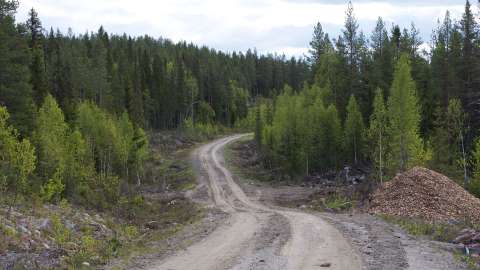Literature review highlights multiple aspects of forest roads in Sweden

The forest road network in Sweden has developed over the last 70 years to serve the forest sector. Forest roads are built by forest owners to transport timber, machinery, equipment, and personnel in and out of the forest. The forest road network helps reduce costs by shortening off-road transport distances and total transport time, as well as energy consumption. The roads are often open for use by other actors, for example, the public, fire brigades, and tourism companies. Thus, the roads facilitate access to the forest for multiple stakeholders, which may have both positive and negative impacts.
Forest road construction affects the environment in different ways. The roads create new structures and change habitat composition in the forest landscape. Increased disturbance from traffic and more human activity in the forest can have ecological impacts. Road construction may also cause damage to cultural remnants. In a literature study, the impact of forest roads in Sweden on social, ecological, and environmental factors is highlighted, and how the different factors can interact. The focal topics addressed comprised social values, reindeer herding, wildlife, plants, insects, and water. The review can be accessed here.
Funding
The study received funding from Skogssällskapet (grant no. 2019-643) and the Skogforsk framework program for 2021–2024.
Reference
Ring, E., Wallgren M, Mårald E, Westerfelt P, Djupström L, Davidsson A, Sonesson J. 2024. Forest roads in Sweden – infrastructure with multiple uses and diverse impacts. Silva Fennica 58, article id 24021.
We will review and publish your comment as soon as possible.










